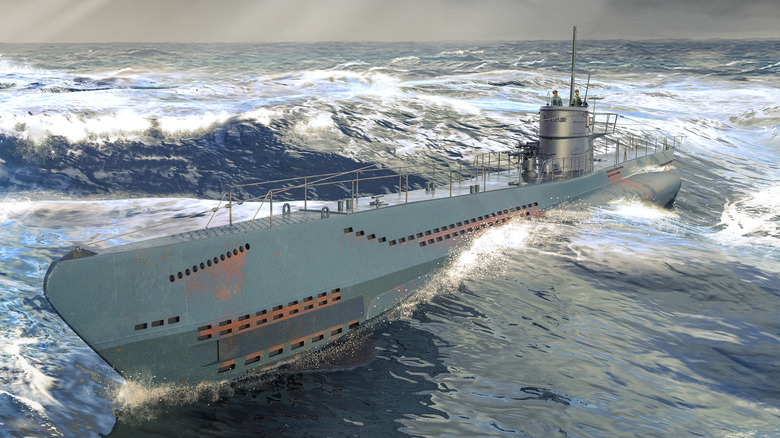What Does The 'U' In U-Boat Stand For And How Many Of Them Are Left?
One of the deadliest military machines of World War II was the infamous German U-boat. While most people know a little about U-boats and are more than aware that they're submarines, one thing that's not immediately clear is why they aren't simply called German submarines. U-boats have been around since 1906, when the U-1 was first commissioned by the Imperial German Navy. By the time World War I crept around, the U-1 was already obsolete, but later models participated in the conflict.
U-boats served throughout WWI, targeting all manner of ships in the Atlantic, but it was during World War II that they made the most difference. During the Battle of the Atlantic, German U-boats terrorized civilian and military shipping across the ocean, causing widespread death and destruction. The U.S. Navy considers "Das Boot" the most accurate submarine movie ever made, and it's about the U-96, which served during the Battle of the Atlantic in WWII.
Still, what does the U stand for, and why don't people call U-boats submarines? The answer is actually pretty simple — language. In German, or Deutsch, as it's called in Deutschland (modern Germany), a submarine is called an unterseeboot, which directly translates into English as under-sea boat. The word breaks out as follows: unter = under, see = sea, and boot = boat. Once you break it out, it makes sense, and U-boat is simply a shortened version of the German word, though in Deutsch, they're referred to as U-Boot. Sadly, very few remain today.
Where you can find some U-Boats
Modern German subs are still given a U designation and number, but technically, anyone speaking German would call a submarine an unterseeboot, or they may just call them U-boats. Still, that is usually used these days to refer to subs from WWI and WWII, and there aren't many of them left. Of course, there aren't many WWI submarines that still exist, but some are available to view at museums, while others are wrecks at the bottom of the sea, like the UB-88. The oldest U-boat you can visit is actually the first, as the U-1 wasn't used during WWI for combat operations.
It hit another vessel in 1919 and was decommissioned, and now it resides in the Deutsches Museum in Munich, Germany. You can see the entire boat and look inside via cutouts. A few parts from other WWI U-boats still exist, and they're spread all over the world's many maritime museums. As for WWII U-boats, there are more options. Four boats from the conflict remain as museum ships – the U-505, U-534, U-995, and the U-2540.
The U-505 resides at the Chicago Museum of Science and Industry. You can find U-534 in England, where it's on display at a park on the Mersey River. It was sunk at the end of the war and raised in 1996, and has been on display since. U-995 is on display at the Kiel Naval Arsenal in Kiel, Germany, where it resides in mostly its original condition. Finally, the U-2540, which is one of the last U-boats Germany built, was scuttled before seeing combat. She was raised and restored and is on display at the German Maritime Museum in Bremerhaven, Germany.

